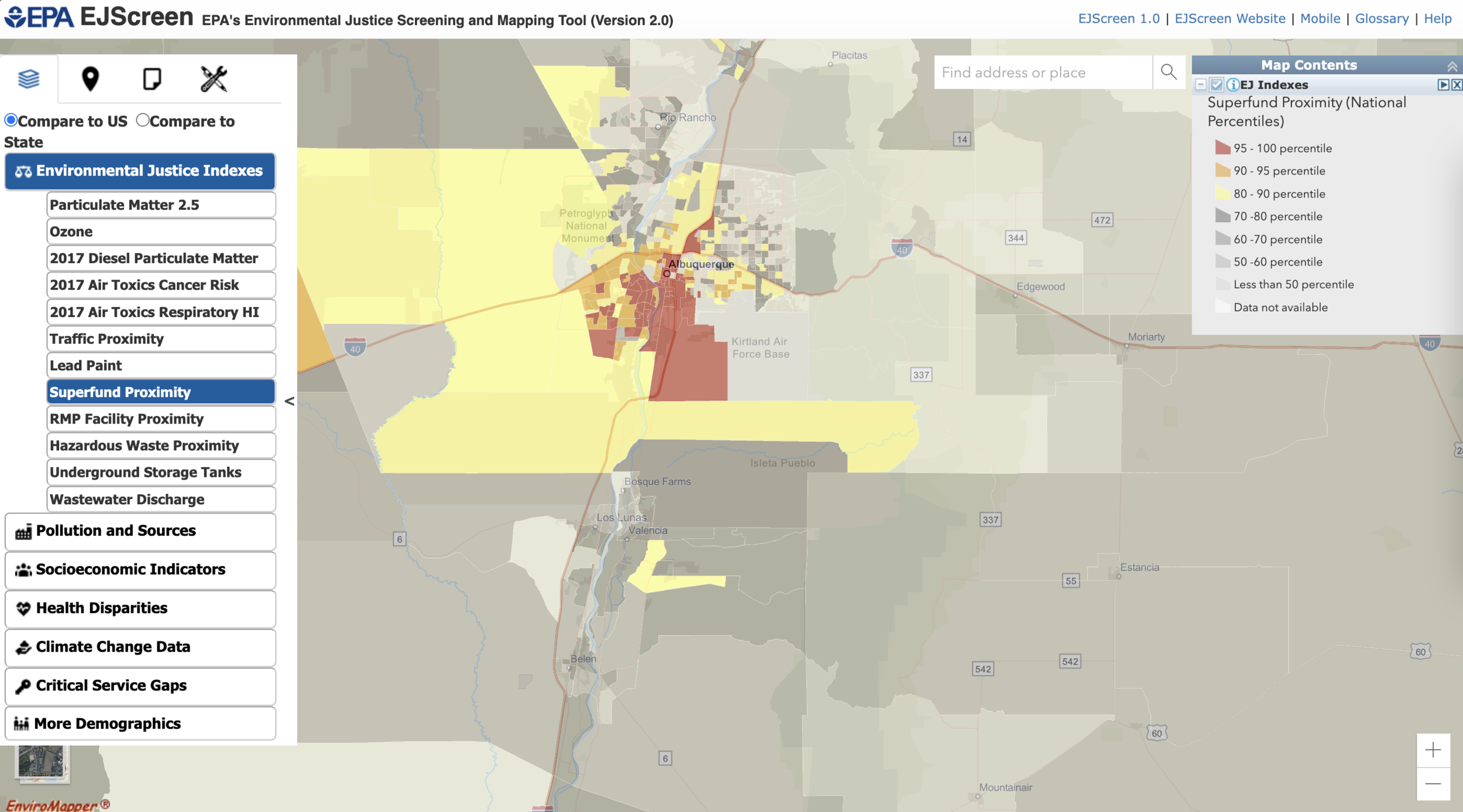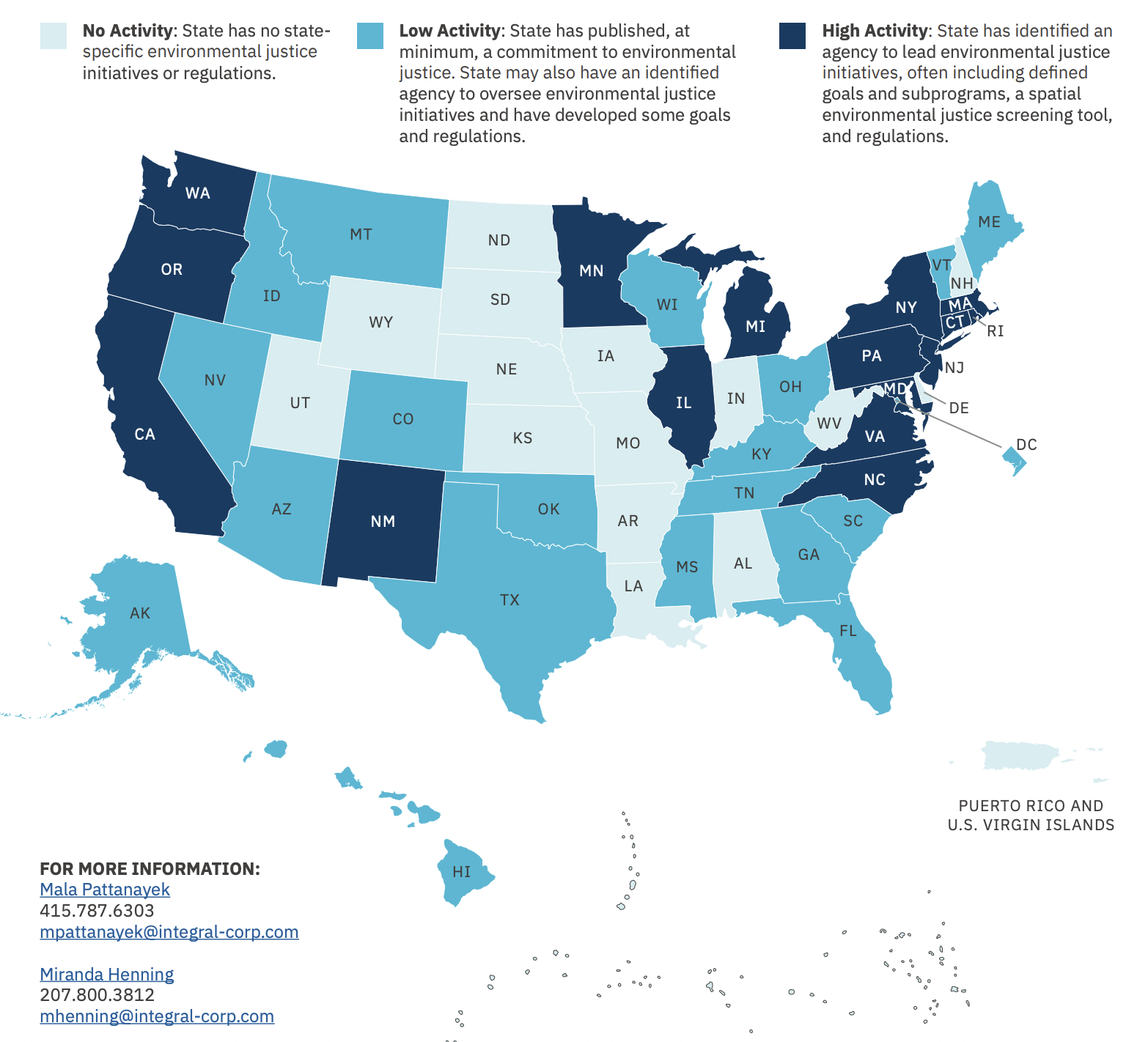What can we learn from state-specific efforts to address environmental justice?
Think about the last time you drank some water. My guess is you opened a water bottle, pressed a glass against your fridge water dispenser, or simply, placed a glass under your faucet and took a sip (or a gulp) without hesitation. Depending on how you consumed that sip of water likely indicates your relationship to environmental justice. If you are buying bottled water, you may not have safe tap water. If you can take a sip from the faucet without a second thought, you’ve likely never faced any water quality concerns, or had reasons to doubt the water utility.
In many cases, communities know how frequently they have to purchase bottled water because of unsafe tap water, or rates of asthma in their neighborhood because of air pollution, but may lack the tools or support to address these issues.
States across the US have started to develop environmental justice screening tools and we are curious to learn how these can be used as tools to prevent new environmental hazards from entering a community, or as a tool to advocate for environmental clean-up. If used effectively, the state-specific tools can be a resource for communities to see the varying environmental hazards their communities may be facing, and help clarify where sources that cause public health issues are coming from. This blog will share more about a project we are kicking off to evaluate state-specific screening tools and the benefits of them.
What is Environmental Justice and Why Should We Care?
The Environmental Protection Agency defines environmental justice as “the fair treatment and meaningful involvement of all people regardless of race, color, national origin, or income with respect to the development, implementation and enforcement of environmental laws, regulations and policies.” Everyone has the “right” to be protected from degradation of our environment, but that unfortunately is not the reality for BIPOC communities in our country. Addressing environmental injustices means holding our national and local government officials accountable for protecting our environmental rights.
What Purpose Do Environmental Justice Screening Tools Serve?
Environmental Justice (EJ) screening tools use geospatial data to give a clearer image of the types of environmental hazards a community may face. This coupled with demographic indicators can help characterize who is impacted. These tools may be used to combat environmental injustices on the national and state level, but are only as strong as the data and community engagement process that was used to develop them. The EPA currently has its own EJScreen that recently was updated, and the Council on Environmental Quality just released a draft version of the Climate and Economic Justice Screening Tool to support the Justice40 initiative. Though both of these national tools are intended to guide environmental justice work, they are quite different in terms of the data used to characterize EJ issues.
Side by side comparison of EPA EJScreen (left) and the CEQ Climate and Economic Justice Screening Tool (right).
As of 2022, there are 16 states that have their own screening tool with varying indicators and user-interfaces. On one hand, this is one benefit of a state-specific tool: it allows for each state to capture the nuance and most important environmental justice issues that a national tool may not be able to do. On the other hand, we know that each state is also utilizing these tools differently, and we are keen to understand how these tools can be effective means to prevent and address environmental injustices.
Colleagues at Integral Consulting recently conducted an analysis to demonstrate the variability in EJ initiatives across the US.
Through my research at EPIC this spring, we will further dig in and evaluate:
How often are these tools used to address environmental justice issues?
What role have community stakeholders played in the tool development?
Which data are most important to inform decision making, and how is this decided state to state?
What ways states with high EJ activity have used the screening tools to benefit BIPOC community health?
How can states with EJ screening tools help states that don’t have any tools or departments focused on EJ in their efforts to address environmental injustices?
If this work is of interest to you, or you are curious about learning more, please reach out to me, Semaj, at smfielding@umes.edu, or Jessie Mahr at jessie@policyinnovation.org.





